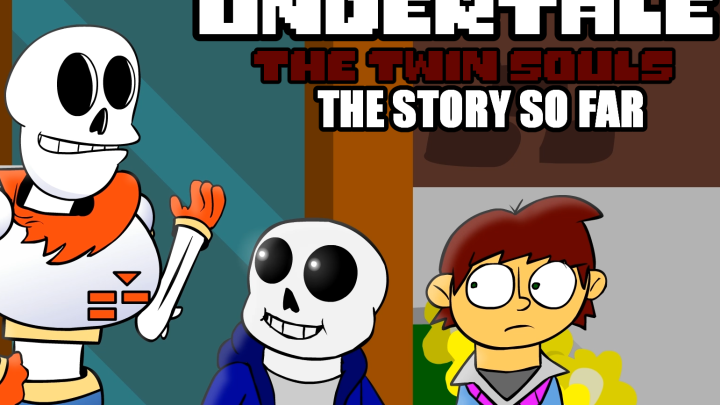Undertale is more than just a game; it’s an emotional journey that has captivated players since its release. With charming graphics, quirky humor, and a unique battle system, this indie gem invites you into the underground world of monsters. But beneath its playful exterior lies a rich narrative filled with depth and complexity.
As you traverse through this pixelated realm, you’ll encounter memorable characters and face moral dilemmas that challenge your instincts. Each choice shapes your experience, making every playthrough distinct. Whether you’re fighting for survival or forging friendships, understanding the story of Undertale requires diving deep into its layers.
If you’ve ever wondered what makes Undertale so special or sought to unravel its intricate plotlines and themes, you’re in the right place! Let’s embark on an adventure to decode the heartwarming yet heartbreaking tale behind this beloved title.
Understanding the Main Characters
Undertale is rich with memorable characters, each playing a vital role in the narrative. At the heart of it all is Frisk, the player-controlled protagonist whose choices shape the journey through this fantastical underground world.
Then there’s Sans, a laid-back skeleton with a penchant for puns. Beneath his humorous exterior lies deep wisdom and complexity. He can become both an ally and adversary depending on player decisions.
Papyrus, Sans’s enthusiastic brother, contrasts his sibling with innocence and ambition. His quest for validation adds layers to their relationship.
Toriel serves as a motherly figure who embodies warmth yet wrestles with her past. Her protective instincts resonate strongly throughout the game.
Asriel Dreemurr represents transformation—his arc reveals profound insights about love and loss that linger long after players reach their destinations in this engaging tale.
Multiple Endings and Player Choices
Undertale captivates players with its branching narratives shaped by choices. Each decision influences the outcome, creating a deeply personalized experience. Whether you choose to spare or eliminate monsters affects not only your journey but also how characters perceive and interact with you.
Three distinct endings emerge based on these actions: the Pacifist, Neutral, and Genocide routes. The Pacifist ending encourages understanding and compassion, while the Genocide path revels in destruction. This stark contrast highlights moral dilemmas faced throughout gameplay.
Players often find themselves reflecting on their choices long after finishing the game. The weight of decisions invites contemplation about empathy versus ruthlessness. Undertale masterfully intertwines storytelling and player agency, making each run a unique adventure that resonates personally with every gamer who explores its depths.
Themes and Symbolism in Undertale
Undertale is rich with themes and symbolism that resonate deeply with players. One of the most prominent themes is the nature of choice. Every decision you make influences not just your path but also the fate of others, highlighting moral dilemmas.
Friendship and compassion are woven throughout the narrative. Characters like Sans and Papyrus exemplify loyalty and love despite challenges. Their bonds serve as a reminder that understanding can transcend differences.
Another layer lies in the concept of good versus evil, often blurred by choices rather than predefined roles. The game invites reflection on consequences—whether through violence or mercy.
Symbolism surfaces in various forms, from character designs to environmental settings. The underground world represents isolation yet cradles opportunities for connection, pushing players to explore their own humanity within this digital realm. Each element enriches an experience that goes far beyond traditional gameplay mechanics.
Fan Theories and Hidden Secrets
Undertale has sparked a vibrant community of fans who love to dive deep into its lore. Theories abound, each adding layers to the already rich narrative.
One popular theory suggests that Flowey is a manifestation of Asriel’s unresolved trauma. This interpretation sheds light on his motivations and enhances our understanding of the game’s emotional core.
Hidden secrets throughout the game keep players engaged long after they’ve completed it. From secret rooms to cryptic dialogue, every corner holds potential revelations waiting to be unearthed.
Fans also debate character backstories, like Sans’ connection to timelines and fate. His laid-back demeanor contrasts sharply with darker undertones in his storyline.
The exploration doesn’t stop at theories; fan art and storytelling expand upon these ideas, creating an ever-evolving tapestry that celebrates Undertale’s depth. Each new find fuels excitement in this passionate community. You can also read this: How to Master the Basics of Gamemaker Programming Language
Impact of Undertale on Gaming Culture
Undertale has left a significant mark on gaming culture since its release. It challenged traditional RPG mechanics, allowing players to choose between violence and mercy. This innovative approach sparked discussions about morality in games.
The game’s quirky humor and unique characters resonated with players worldwide. Memes quickly emerged, showcasing iconic moments and phrases, further embedding Undertale into online communities.
Indie developers have cited Undertale as inspiration for their own projects, pushing the boundaries of storytelling and player interaction. Its success demonstrated that narrative-driven experiences can thrive outside mainstream titles.
Moreover, fan art and music adaptations flourished across platforms like Tumblr and YouTube, cementing a dedicated fanbase. This vibrant community continues to explore the game’s depths through theories and creative expressions.
In many ways, Undertale redefined what it means to be a video game—showcasing that emotional depth can coexist with pixelated graphics.
Conclusion
The story of Undertale is a rich tapestry woven with choices, emotions, and hidden depths. Players are not just passive observers; they are active participants in shaping the narrative’s outcome. This interactive experience allows for personal connections to be formed between players and characters, making every choice feel significant.
Through its multiple endings, Undertale challenges traditional gaming norms by emphasizing morality over mere victory. Each player’s journey brings out different facets of the game’s themes—compassion, sacrifice, and redemption—which resonate long after gameplay ends.
Fan theories and secrets have kept the community buzzing since its release. The uncovering of these layers adds to the enjoyment of exploring this unique universe. Players find themselves dissecting every interaction to unveil deeper meanings behind character motivations and plot twists.
Undertale has left an indelible mark on gaming culture as well. It broke boundaries with its storytelling approach and has influenced many indie games that followed suit. Its blend of humor, heartache, and engaging gameplay continues to inspire new generations of developers and gamers alike.
Understanding the story of Undertale goes beyond simply finishing a game; it involves diving into its emotional core—a journey that invites everyone to explore their own humanity amidst a whimsical yet poignant backdrop.



